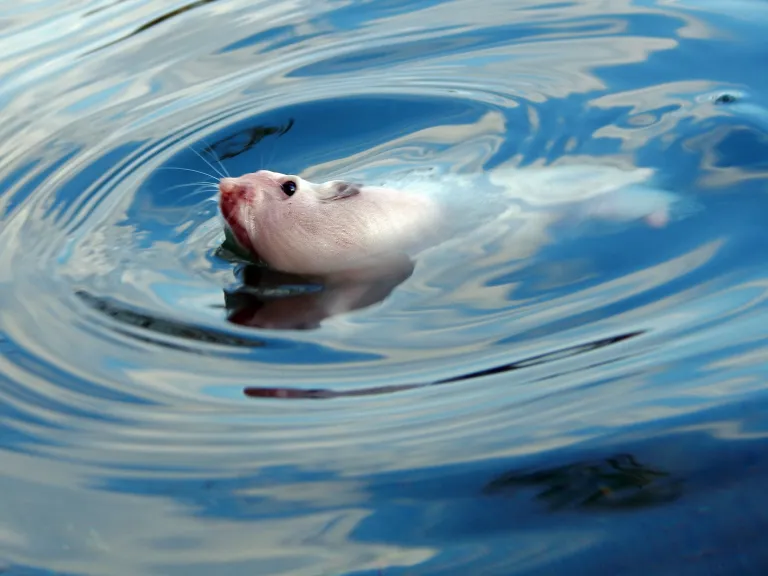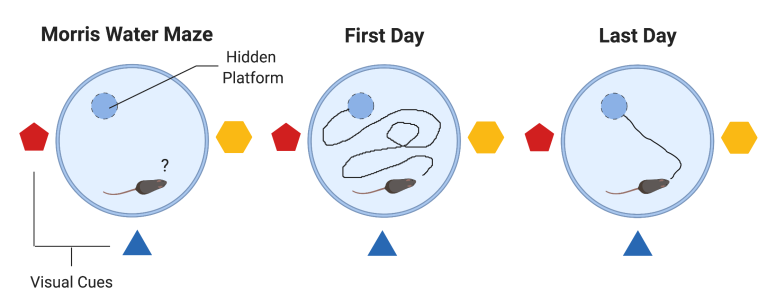Spinocerebellar ataxias (SCAs) are well known for worsening motor coordination symptoms caused by the degeneration of the cerebellum. Yet, increasing reports indicate that broader changes are occurring in the brains of some SCA patients. This includes changes in the hippocampus, a brain region critical for learning and memory. One way to test learning and memory in mice is the Morris Water Maze Test. Researchers use this test on SCA mouse models to investigate how and when learning and memory symptoms arise. More importantly, we can also use this test to evaluate the effect of potential treatments on learning and memory.

The Morris Water Maze consists of a large circular pool of opaque water. A platform is placed in the pool just under the surface of the water so that the mouse won’t be able to see it. Though mice are good swimmers, they don’t particularly enjoy swimming. Mice will always attempt to find the platform as quickly as possible. Shapes on the walls around the pool help the mice orient themselves within the pool (first panel in the figure below).
The first time a mouse swims in the pool (second panel in the figure), the mouse tends to swim aimlessly around until they eventually find the hidden platform. Each subsequent time the mouse swims in the pool, the mouse will get better and better. Using the shapes on the wall to help identify where they are in the pool, the mouse will eventually learn and memorize the platform’s location.

As that happens, they will be better and better at the task. Eventually, the mice will swim immediately to the platform when placed in the pool (third panel in the figure). Researchers can measure this improvement by measuring how much time it takes the mouse to reach the platform and the length of its path to the platform. Additionally, to assess the strength of the memory, researchers can take out the platform from the pool in what is called a “probe trial”. Mice that spend more time in the area where the platform used to be are considered to have built the strongest memories of that location.
As is the case for some SCA mouse models, mice with impaired learning and memory have more difficulty learning and remembering the correct location of the platform. As a result, they spend a longer time searching for and swim longer distances to the platform. Overall, they display a poorer improvement over time. By using the Morris Water Maze Test on SCA models that receive different treatments, scientists can then further test which therapy could improve their learning and memory symptoms. Therefore, the Morris Water Maze Test may help identify new therapeutic strategies to treat learning and memory problems in patients.
If you would like to learn more about the Morris Water Maze, take a look at these resources by the Scholarpedia and JOVE.
Snapshot written by Carrie Sheeler and edited by Dr. Larissa Nitschke.










